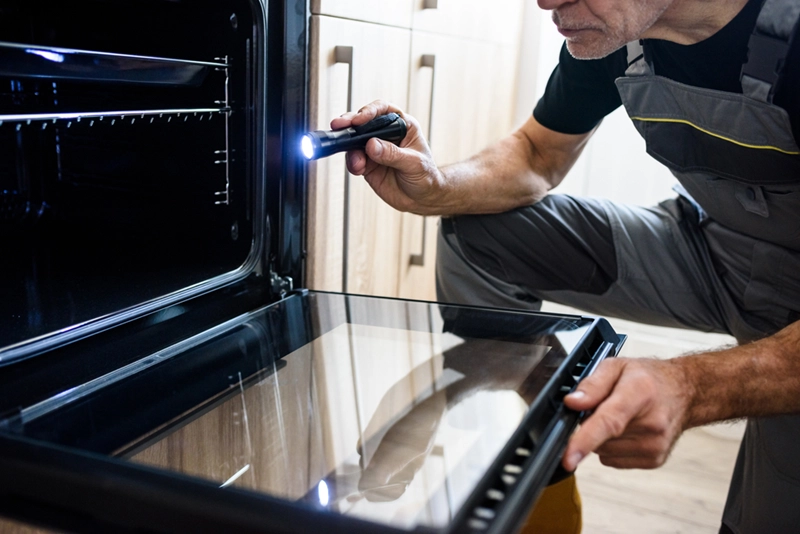When your electric oven stops heating, it can throw off your entire meal plan. Whether the oven isn’t heating at all or just not getting hot enough, several common issues could be at fault. This step-by-step guide will help you diagnose and possibly fix the problem yourself before calling a professional.
1. Check the Power Supply
Before diving into complex repairs, make sure your oven is receiving power.
- Verify the power cord is plugged in. Unplug and plug it back in to ensure a solid connection.
- Inspect the circuit breaker. Reset it if it has tripped.
- Test the outlet. Use another appliance to ensure the outlet is working.
If your oven has no signs of power at all (no lights, no sound), the issue is likely electrical.
2. Inspect the Heating Elements
Electric ovens usually have two heating elements: one at the bottom (bake) and one at the top (broil).
- Look for visible damage. Cracks, blistering, or discoloration are signs the element may have burned out.
- Turn the oven on. If one or both elements fail to glow red, they may need replacement.
Tip: You can use a multimeter to test for continuity in the heating element.
3. Test the Oven Temperature Sensor
The temperature sensor monitors the internal temperature and tells the oven when to heat.
- Check for visible damage. If the sensor is loose or broken, it can cause heating problems.
- Use a multimeter. At room temperature, the sensor should read around 1100 ohms. If it’s far off, replace it.
4. Examine the Thermal Fuse
Some ovens have a thermal fuse that trips if the unit overheats.
- Locate the thermal fuse. Usually found at the back of the oven or behind the control panel.
- Test for continuity. If the fuse has blown, the oven won’t heat.
If the thermal fuse is blown, determine what caused it to trip before replacing it.
5. Check the Oven Control Board
The electronic control board governs all heating functions.
- Look for error codes. Some ovens display diagnostic codes you can look up in the user manual.
- Inspect for burn marks or damage. A failed board can prevent heating.
Note: Replacing a control board can be complex. If you suspect this is the problem, you may want professional help.
6. Calibrate or Replace the Thermostat
An inaccurate thermostat can result in incorrect temperatures.
- Test with an oven thermometer. Set the oven to 350°F and check if the internal temperature matches.
- Calibrate if needed. Most ovens allow manual calibration through the control panel.
If the thermostat is faulty, it may need replacing.
7. Consider the Oven’s Age
If your oven is more than 10-15 years old and has multiple issues, replacing it might be more cost-effective than repeated repairs.
When to Call a Professional
Call a technician if:
- You suspect wiring issues
- The control board is faulty
- You’re not comfortable using a multimeter or working with electrical components
Final Thoughts
A non-heating oven can be a simple fix or a sign of deeper electrical problems. Start with basic checks and work your way up. Many issues like blown fuses, broken heating elements, and sensor malfunctions are easily solvable at home. However, when in doubt, a certified appliance technician can safely handle complex diagnostics and repairs.

